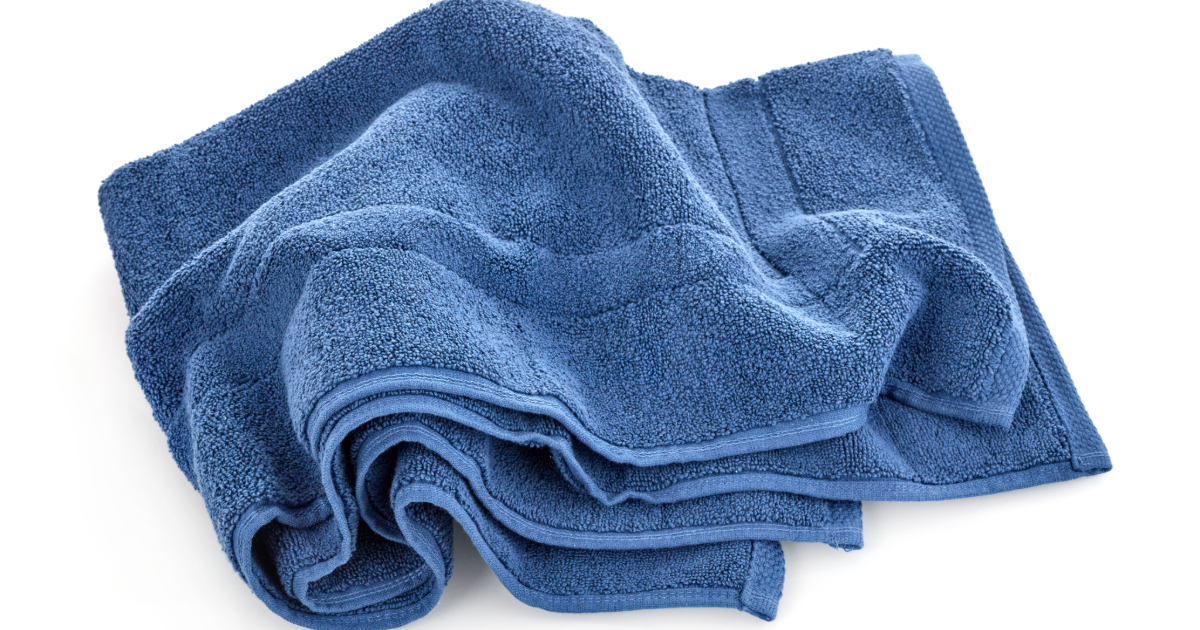Microfiber towels are incredibly useful for cleaning and dusting around the house. With their ultra-fine fibers, they can pick up dust, dirt, and grime much more effectively than regular cotton towels. However, it’s crucial to know how to properly clean microfiber towels so they stay in good condition.

Improper washing can ruin the integrity of the fibers, reducing their cleaning capabilities over time. Fortunately, with the right technique, keeping them clean is quite straightforward.
Why Cleaning Microfiber Towels Properly Matters
Microfiber towels consist of synthetic polymer fibers that are much finer than cotton and other natural fabrics. The fibers usually measure 1/16th the thickness of a human hair!
This means the towels have an extremely high surface area to soak up liquids for superior absorbency. The star-shaped structure of the fibers also lets them grab onto all kinds of dust, lint, pet hair, and other debris very efficiently.
However, the fibers can lose their abilities if washed improperly. Excessive heat and harsh detergents slowly erode the material. Fabric softeners also leave a residue that blocks the gaps between the fibers, preventing them from absorbing messes or latching onto dirt.
With the right care, a quality microfiber towel can last through 300 washes while maintaining peak performance. Follow the simple guide below to get the most out of your microfiber collection.
Key Takeaway: Microfiber’s ultra-fine synthetic fibers provide unmatched cleaning power and absorption.
How to Machine Wash Microfiber Towels
Washing your microfiber towels in the machine is quick and convenient. Just be sure to use a gentle cycle and avoid certain detergent ingredients.
Step 1: Shake Out Excess Dirt
Microfiber’s positively charged fibers act like a magnet, clinging onto all kinds of particles. Before tossing them in the wash, shake out any loose debris over a garbage bin so it doesn’t transfer to other laundry items. This also prevents a dirt buildup over successive washes.
Step 2: Wash Towels Separately
Always wash microfiber separately from cotton, wool, and other fabrics that shed lint. The towels will act like a lint roller, picking up fuzz that later gets left behind on surfaces during dusting. Washing alone also prevents grease and dirt transfer from regular laundry.
Step 3: Use a Mild Laundry Detergent
Stick to a fragrance-free, dye-free, additive-free liquid detergent. Powder detergents can leave a residue that blocks the fabric’s pores. Strong perfumes and optical brighteners can also interfere with the fibers. A mild formula without excess chemicals is ideal.
Step 4: Wash in Cool or Warm Water
Warm water up to 160°F is fine for heavily soiled towels. However, repeated hot washes will gradually break down the synthetic fibers. Cool water is suitable for light cleaning duties like dusting. Avoid temperature extremes when possible.
Step 5: Dry on Low Heat
Excessive heat causes microfiber fibers to shrink slightly, reducing their cleaning capabilities over time. Tumble dry on the lowest setting or air fluff mode. You can also air dry by hanging or flat drying for best results.
By separating loads and avoiding harsh chemicals, machine washing provides an easy way to revive dingy microfiber towels. Just be sure to handle them gently throughout the process.
Key Takeaway: Shake off debris, use a mild detergent, wash in warm water, and dry on low heat.
How to Hand Wash Microfiber Towels
For towels used lightly around the house or spot cleaning jobs, a quick hand wash restores them without the need for a full machine cycle. Here’s the simple process:
Step 1: Shake Out Any Loose Particles
Give the microfiber towels a good shake or two over a trash can. This removes most of the surface debris so it doesn’t transfer elsewhere later.
Step 2: Fill Sink Basin With Warm Water
Fill up your clean sink or a bucket/basin with warm water. Water that is uncomfortably hot may damage the fibers, so warm is ideal. The water temperature helps dissolve grease that hand washing alone often fails to tackle.
Step 3: Mix In a Small Amount of Mild Detergent
Add a half teaspoon to one teaspoon of fragrance-free liquid laundry detergent per gallon of water. Powder detergents can leave a residue, so a mild liquid works best. Swish the water gently to dissolve the cleaner.
Step 4: Soak and Hand Wash the Towels
Place the microfiber towels in the warm, soapy water. Let them soak for 10-15 minutes, longer for heavily soiled towels. Agitate and squish the fabric together to help loosen the dirt. Give any visibly stained areas some extra scrubbing as needed.
Step 5: Rinse Thoroughly and Wring Out Water
Drain the dirty water and refill your basin/sink with clean water for rinsing. Wring out as much moisture as possible because excess water causes longer drying times. Repeat the rinse if there are still soap bubbles visible.
Key Takeaway: A quick hand wash revives lightly used microfiber towels to keep them absorbent for dusting.
Hand washing prevents the need to machine wash after every use. It takes just a few minutes but breathes new life into tired microfiber towels.
How to Dry Microfiber Towels
Proper drying keeps microfiber towels functioning well for many washes. Follow these guidelines for the best results:
Shake Out Excess Water
After washing and wringing thoroughly by hand, give the towels a few forceful shakes. This removes more water so they’ll dry faster. It also prevents heavy clumps of saturated fabric, allowing even drying.
Air Dry Whenever Possible
Natural air drying is the best way to dry microfiber towels without compromising longevity or effectiveness. Hang individually on a towel rack or drying rack, or lay flat on a clean surface. Avoid direct sunlight as the UV rays may degrade materials over time.
Machine Dry Using Low Heat If Necessary
If air drying isn’t convenient, machine drying is okay occasionally using the right settings. Tumble dry separately from other fabrics on low or no heat. Excessive heat causes slight shrinkage over many cycles. Clean the lint trap thoroughly first too.
Store Properly Once Dry
When fully dry, fold or roll up the microfiber towels neatly. Keep them stored away from other fabrics in an airtight container. This prevents dust and lint from embedding in the fibers before the next cleaning session.
Microfiber Wash Tips & Tricks
Follow these extra pointers for keeping microfiber towels like new through hundreds of uses:
- Add white vinegar to the rinse cycle to eliminate odors from musty towels. The mild acid breaks down grime.
- For tough grease stains, mix one teaspoon dish soap into hand wash water as a degreasing booster.
- Replace microfiber towels once they become too threadbare for effective scrubbing and absorption.
- To restore flattened pile, place a damp towel in the dryer with a couple of clean tennis balls to fluff up the nap.
- For disinfecting washing, white vinegar or lemon juice work well without harsh bleach.
Key Takeaway: Vinegar, dish soap, tennis balls in the dryer, and more handy tricks maximize microfiber performance.
Using the proper techniques truly makes a difference in microfiber longevity. Follow the care instructions above to maintain quality towels that grab dirt instead of just pushing it around.
FAQs
Should I use fabric softener on microfiber towels?
No, fabric softeners leave a coating that fills in the spaces between the fine fibers. This prevents water and debris from penetrating the material, severely reducing cleaning capabilities.
Can I wash microfiber towels with regular laundry?
Wash microfiber towels separately from cotton, wool, and other natural fabrics. These materials shed lint that sticks readily to the towels, which later gets deposited onto surfaces you’re trying to clean.
How should I wash new microfiber towels before first use?
It’s a good idea to give new microfiber towels an initial wash using mild detergent and warm water before using them. This removes any residual manufacturing chemicals that may interfere with performance.
How often should microfiber towels be washed?
For general cleaning use, wash microfiber towels every 3-5 uses. Towels used for heavy-duty scrubbing or absorbing lots of liquid should be washed after 1-2 uses. More frequent washing keeps them free of bacteria and prevents dirt buildup.
Can you put microfiber towels in the dryer?
Yes, you can dry microfiber towels in the dryer but only use the lowest heat setting. Excessive heat causes slight shrinkage over time which diminishes their cleaning capabilities. For best results, air dry towels instead.
Conclusion
Microfiber towels are valued cleaning tools that can tackle dirt and grime much more effectively than regular cotton fabrics if maintained properly. By understanding the special care requirements, you’ll get the most out of your collection.
Separate microfiber from other laundry, stick to mild detergents, avoid fabric softener, wash in warm water, and always use the gentle cycle. Low heat drying also prevents damage to the delicate synthetic fibers. It’s also smart to wash them frequently so grease and dirt don’t get a chance to build up.








